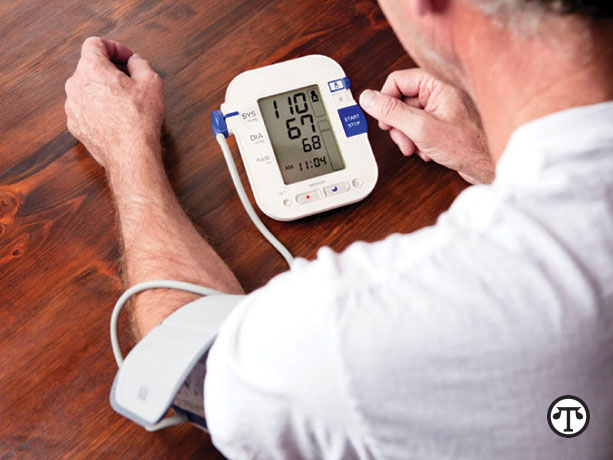New Survey Reveals BP Monitoring Habits Need To Improve

(NAPSI)—A new survey from the American Heart Association and the American Medical Association shows that 40 percent of people with high blood pressure (HBP), or hypertension, report their numbers were still too high at their most recent doctor’s appointment, and many don’t even know their numbers.
The Problem
HBP occurs when the force of blood flowing through your blood vessels is consistently too high. Ideally, blood pressure should be below 120/80 mmHg. It’s considered elevated if the top number (systolic pressure) is above 120 and high if systolic is 130 or higher, or the bottom number (diastolic pressure) is 80 or higher. Uncontrolled, it can lead to heart attack and stroke, and most of the time there are no obvious symptoms.
What People With HBP Can Do
Most people say they know what to do to lower HBP. Yet, according to the new survey, 44 percent of those with HBP didn’t know what a high reading is, and 27 percent didn’t know what their blood pressure was the last time it was checked. In addition, while 80 percent of those diagnosed with HBP say they take medication, 16 percent of those with HBP believe that as long as they take their BP medication, they don’t need to monitor their BP.
“The first step to keeping your numbers under control is knowing what they are,” said Sondra DePalma, DHSc, a cardiology PA and certified hypertension specialist. “There are no symptoms of high blood pressure, so you can’t rely on how you feel to gauge your levels. You have to take the time—less than 10 minutes—to check it. That’s 10 minutes well spent, considering controlled blood pressure can add five years to your life.”
Some people will need medication to keep their blood pressure numbers in a healthy range, DePalma said. “But that doesn’t mean you get a free pass on lifestyle changes to support your blood pressure−lowering therapy. Making healthier living choices helps your medicine work better.” DePalma added that under a doctor’s care, some people may be able to reduce their medication dose or wean off of it after making consistent progress with lifestyle changes.
Lifestyle changes that help reduce blood pressure include:
• Get regular physical activity: Ninety−150 minutes a week of aerobic activity can reduce systolic blood pressure about 5 mmHg.
• Eat a well-balanced diet low in salt: Eating a diet rich in fruits and vegetables, whole grains and low-fat dairy, such as the DASH eating plan, can drop your systolic pressure up to 11 mmHg. Reducing your salt intake by about 1,000 mg per day has a similar effect on systolic pressure as increasing aerobic activity—dropping it about 5 mmHg.
• Maintain a healthy weight: For about every two pounds lost, your systolic pressure could drop 1 mmHg.
• Work together with your doctor to create a treatment plan.
Learn More
For more facts and tips about HBP and how to control it, go to www.heart.org/hbp.

“The American Heart Association and the American Medical Association found 40 percent of people with high blood pressure report their numbers were uncontrolled at their most recent reading, and many don’t even know their numbers. http://bit.ly/2vW64jy”
